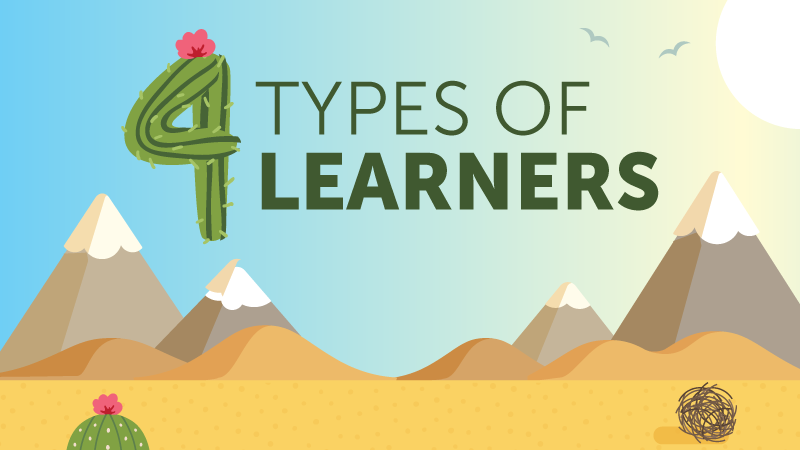The 4 types of learners in education include visual, auditory, reading/writing, and kinesthetic.
It’s important to develop lesson plans to help all the different types of learners absorb information in a way that fits their individual needs. When teachers understand the characteristics of different learning styles and associated instruction strategies, they are better able to address the instructional requirements of all their students.
Because every student learns differently, learning styles are widely recognized in both classroom management theory and education theory in general. “The term ‘learning styles’ speaks to the understanding that every student learns differently. Technically, an individual’s learning style refers to the preferential way in which the student absorbs, processes, comprehends and retains information,” Teach.com explains. For example, one student might learn best by acting a process out, while another might prefer reading about the topic instead.
The VARK Model
The learning styles of students depend on several factors, including their environment and other cognitive and emotional factors. Because every student is different, it’s a good idea for teachers to develop classroom strategies that incorporate different learning styles for different types of learners. The VARK model helps teachers do this. It is an acronym that refers to the four learning styles: visual, auditory, reading/writing preference, and kinesthetic.

VARK is focused on the idea that students retain and process information differently and have “preferred learning modes” that allow them to learn their best. “Allowing students to access information in terms they are comfortable with will increase their academic confidence,” Teach.com explains. It’s important to note that, while everyone uses a combination of learning styles, most have a clear preference for one.
Understanding Learning Styles
Here is a breakdown of the four types of learners, along with tips for incorporating their needs into your lesson plans.
Visual
Visual learners prefer to take in information using charts, maps, graphs, diagrams, and more. Using images to explain concepts and ideas is the best way to reach a visual learner. However, this type of learning style does not include photographs or videos. Instead, visual learners learn best when information is presented using patterns, shapes, and other visual aids in the place of written or spoken words. One way teachers can differentiate their instruction for visual learners is by using graphic organizers to teach a lesson. A flow chart might be used to explain a scientific process, for example.
Auditory
This learning style describes students who learn best when information is heard or spoken. They benefit from lectures, group discussion, and other strategies that involve talking things through. “Often people with this preference want to sort things out by speaking first, rather than sorting out their ideas and then speaking,” VARK Learn Limited explains. To help auditory learners learn, teachers can post audio recordings of lessons on the class website, or incorporate group activities that require students to explain concepts to their classmates.
Reading/Writing Preference
Students who have a reading/writing preference prefer information to be presented using words. They love to read and perform well on written assignments such as stories or book reports. “This preference emphasizes text-based input and output – reading and writing in all of its forms,” VARK Learn Limited notes. A great way to help these students learn is by having them describe diagrams or charts using written statements. Then, they can study their notes later to better retain the information.
Kinesthetic
Kinesthetic learners learn best when they can use tactile experiences and carry out a physical activity to practice applying new information. “People who prefer this mode are connected to reality, ‘either through concrete personal experiences, examples, practice or simulation,’” VARK Learn Limited explains. Give these students a working example of an idea or process, or task them with recreating experiments to illustrate concepts.







